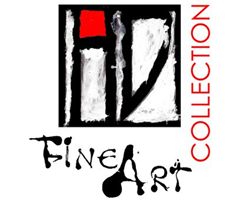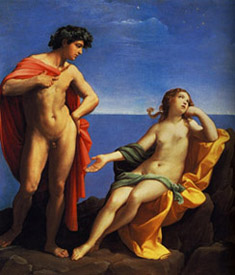Product Description
Alfred Meyer-Bernburg, Bacchus, Oil on board, 1924


ALFRED MEYER-BERNBURG (1872-?) Berlin & Munich, Germany
Bacchus 1924
Oil on board
Signed: Alfred Meyer-Bernburg MCNN 1924 (lower right on the canvas)
Image: H: 16” x W: 11”
Framed: H: 23 1/4” x W: 18 3/8”
Price: $39,000
Alfred Meyer-Bernburg was born in Bernburg, Germany on July 27th, 1872. He studied at the Akademie in Berlin from 1891-92 and later at the Akademie der Bildenden Kuenste in Munich from 1897-1904. Meyer-Bernburg was a member of the Münchner Künstlergruppe (MKG).
Alfred Meyer-Bernburg, Bacchus, Oil on board, 1924
ANDRE VINCENT BECQUEREL (1893-1981) France
Arabian Horse sculpture c. 1930
Bronze with overall rich green/brown patina with intricate sculpting and details, black Belgian marble plinth base
Signed: A. Becquerel (inscribed in the bronze)
H: 12” x W: 21” x D: 6”
Price: $27,500
Andre Vincent Becquerel was born in St. Andre-Farivilliers. He studied at the l’Ecole des Beaux Arts in Paris under Hector Lemaire and Prosper Lecourtier. He specialized in fine animal sculpture and regularly exhibited at the Salon des Artistes Francais from 1914 to 1922. Becquerel worked for the Editeur Parisiens Edmond Etling in Paris and created a monumental sculpture in patinated plaster for the “Pavillon international” at the Exposition Internationale in Paris in 1937.
CHRISTIAN DELL (1893-1974) Germany
BAUHAUS (1919-1933) Germany
“Tee-Ei” (tea ball) 1924 (rare set of 8)
Silvered brass.
***These are all in fine original, untouched condition.
Illustrated: Christian Dell: Silberschmied und Leuchtengestalter im 20. Jahrhundert, Beate Alice Hofmann, Museum Hanau (Hanau: Heller Druck,1996) illus. 15, p.56; Modernist Design 1880-1940, Alastair Duncan, The Norwest Collection (Woodbridge, Suffolk: The Antique Collectors’ Club, 1998), p. 173; Decorative Arts 1850-1950, Judy Rudoe, (London: British Museum Press, 1991) cover, p. 276; Die Metall Werkstatt am Bauhaus, (Berlin: Bauhaus-Archiv, Museum für Gestaltung, 1992) pp. 140-141 Silver of a New Era, (Rotterdam: Museum Boymans-van Beuningen, 1992) p. 157; cat. no. 140.
Length: 5 1/4″
Price: $9,600
Christian Dell, metal artist and industrial designer, played a formative role in shaping the Bauhaus style. Dell was the master of the metal workshop at the Bauhaus, 1922-25, in Weimar, working closely with László Moholy-Nagy.
Born the son of a locksmith in Offenbach in 1893, he had a great impact as a teacher on the curriculum of the Weimar metal workshop. He had done an apprenticeship as a silversmith in Hanau before and had also attended the drawing academy, followed by a stay at the Weimar School of Applied Art. Henry van de Velde, director of this institution, coined Christian Dell’s early works with his organic-flowing use of forms, a feature that can also be observed on Dell’s later works.
Metal workshop at the Bauhaus in Weimar:
From 1922, the former goldsmith, silversmith and coppersmith workshops of the Weimar phase became a laboratory for design where metal vessels and lamps were made. This is also where the designs for industry, as well as metal furniture, were ultimately created. In 1922, the silversmith Christian Dell took over as master of works. Following Itten’s departure in 1923, the workshop developed in a new direction with the Hungarian Constructivist László Moholy-Nagy. Instead of individual pieces, prototypes were now made for mass production. In order to manufacture the individual models, a production line was established.
